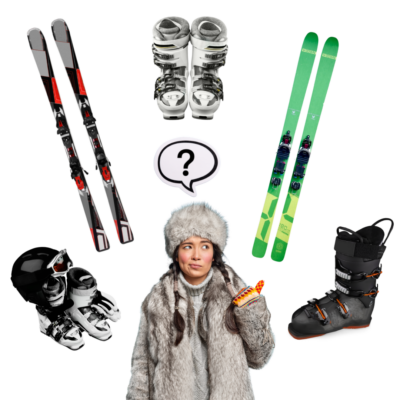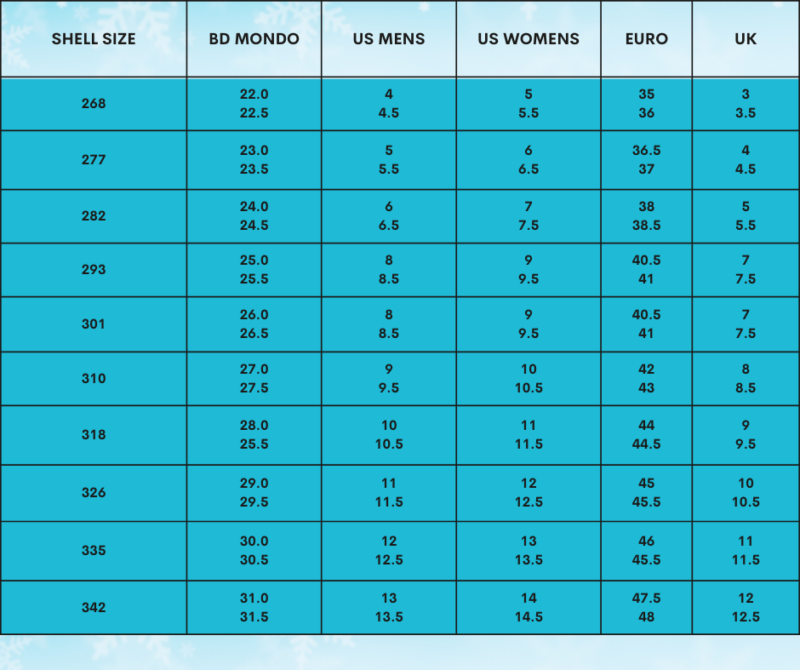8 AM - 6 PM
(970) 368-4540

Reference our ski length and boot size charts to find tips and tricks from our shop pros for finding the right size skis and boots to enjoy a day on the slopes.
There is no ideal formula for determining the perfect length of ski for every skier. An excellent starting point is to use factors such as height and weight – then consider other factors such as snow type, terrain and personal preference. The general rule is to pick a ski length that is somewhere between your chin and the top of your head. Advanced and expert skiers may choose skis that are slightly longer than head height.


For ski boots, pick a size that is closest to your street/dress shoe size, and NOT your athletic shoe size (if that is different for you). Our rental boots are sized by boot shell size. Ski boot shells come in whole sizes.
NOTE: The half size in retail boots are accomplished only by adding a thicker liner, which usually compress after use, changing the size of the boot to the shell size. Snowboard boots are fabric and thus available in half sizes.
